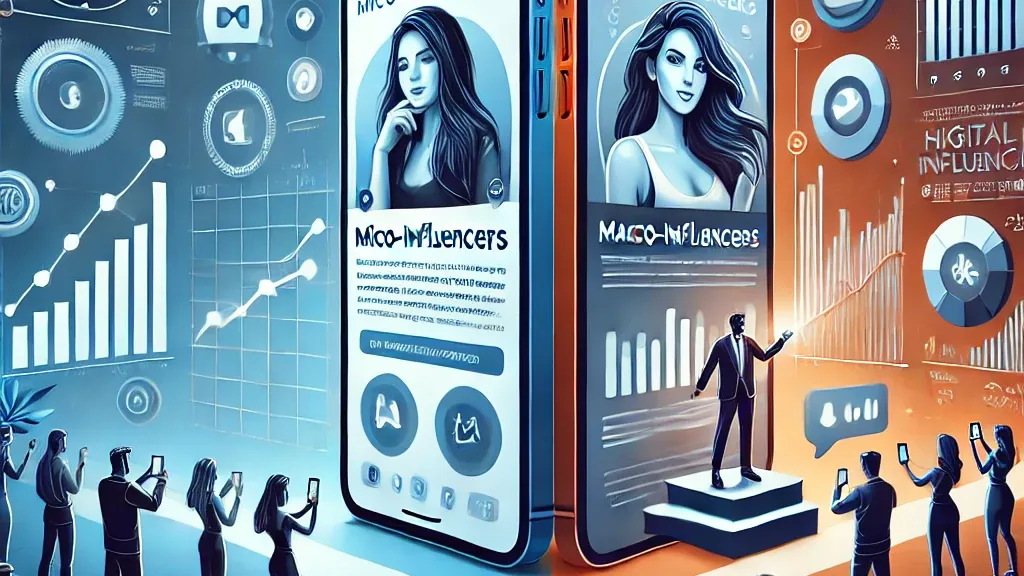
The Future of Influencer Marketing: Micro vs. Macro Influencers
Posted on May 8, 2025
The future of influencer marketing is dynamic and points towards a more nuanced and strategic approach, moving beyond simply the number of followers an influencer possesses. Here’s a breakdown of the key trends regarding micro vs. macro influencers:
The Continued Rise and Importance of Micro and Nano-Influencers:
- Higher Engagement: Micro-influencers (typically 1,000 to 100,000 followers) consistently demonstrate higher engagement rates compared to macro-influencers. Their smaller, more dedicated audiences are more likely to interact with their content, leading to more meaningful conversations and a stronger sense of community.
- Authenticity and Trust: Micro and nano-influencers (under 1,000 followers) are often perceived as more authentic and relatable. Their recommendations feel more genuine, like advice from a friend, fostering greater trust with their audience. This authenticity can lead to better conversion rates.
- Niche Targeting: Micro-influencers often specialize in specific niches, allowing brands to target highly specific communities with tailored messages, increasing the relevance and effectiveness of campaigns.
- Cost-Effectiveness: Collaborating with micro-influencers is generally more affordable than partnering with macro-influencers, allowing brands to work with multiple influencers for a broader reach within a similar budget.
The Enduring Role of Macro-Influencers:
- Wider Reach and Brand Awareness: Macro-influencers (over 100,000 followers) excel at generating broad brand awareness and reaching a large audience quickly, making them ideal for product launches and large-scale campaigns.
- Established Credibility: Macro-influencers, often celebrities or established experts, can lend significant credibility and authority to a brand’s reputation.
- Professional Content Quality: Many macro-influencers have the resources to produce high-quality, polished content.
- Multi-Platform Presence: Macro-influencers often have a presence across multiple social media channels, increasing overall visibility.
The Future is Hybrid and Strategic:
- Blending Micro and Macro: The most effective strategies often involve a blend of both micro and macro-influencers. Macro-influencers can create initial buzz and broad reach, while micro-influencers can drive engagement, build trust, and cater to niche audiences.
- Data-Driven Decisions: The future of influencer marketing relies heavily on data. Brands are increasingly using AI and analytics to analyze engagement patterns, audience demographics, and the authenticity of influencer followings to make more informed decisions beyond just follower counts.
- Focus on Engagement and Conversions: The focus is shifting from vanity metrics like follower count to more meaningful metrics such as engagement rates, click-through rates, and ultimately, conversions and sales.
- Long-Term Partnerships: Brands are moving towards building long-term relationships with influencers, fostering deeper trust and more authentic content creation.
- Authenticity and Transparency are Key: Regardless of the influencer’s size, authenticity and transparency about sponsored content are crucial for building and maintaining audience trust.
- Diversification of Platforms: While Instagram and TikTok remain dominant, other platforms like LinkedIn for B2B and the increasing importance of short-form video across platforms are shaping influencer strategies.
In conclusion, the future of influencer marketing isn’t necessarily about one type of influencer being “better” than the other. Instead, it’s about a strategic and data-informed approach that leverages the unique strengths of both micro and macro-influencers to achieve specific marketing goals. Authenticity, engagement, and targeted reach will be the key drivers of success in the evolving landscape.
